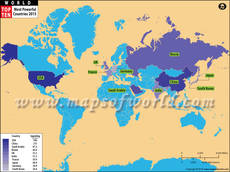What was the Battle of Culloden?
The world has seen the colonization by Great Britain, but there was a time when someone was hoping to overthrow the British armed forces from British soil as well. The Battle of Culloden with the backdrop of one of the most significant wars in Great Britain’s history, was also the last battle ever fought within the grounds of Britain.
What was the reason?
The House of Stuart, founded in 1371 was a European royal house that ruled over Scotland until 1714 when Queen Anne died. Her death left no living successor and according to the Act of Settlement 1701, no Roman Catholics could attain the British throne. This left Sophia, being the closest successor, but a member of Hanover House to rule Britain, owing to the fact that she was not a Roman Catholic, like other members. However, Sophia died only two months before Queen Anne’s death. Then, as per Act of Security 1704 the rule was handed over to King George I, who was her son. The decision was objectified by Catholics in the House of Stuart, also backed up by people in French Kingdom.
The Jacobite Rising of 1745
Fourteen years later, on August 19th, 1745, Charles Edward Stuart, the son of James Francis Edward Stuart (a Catholic member of House of Stuart) launched the ‘Jacobite rising’ at Glenfinnan in the Scottish Highlands. It was aimed to regain the British throne, and bring the Kingdom under the hands of his father. He seized Edinburgh and won the Battle of Prestonpans in September. He was victorious in the battle of Falkirk Muir as well. The momentum was built and Charles headed for an England invasion.
The Battle
While Catholic Christians supported the House of Stuart, the British army had the support of Protestant Christians. The Jacobite army consisted of 6,000 men, which included Catholic Christians and Episcopalians of Scotland, Irish, Scottish, and Englishmen. The British army had 8,000 men including Protestant Christians, Highlanders from Scotland and many others. The British army was led by son of King George II, William Augustus.
On the night of April 15, 1746, the Jacobite army executed an attack on the British army, but could not do much damage to the government forces because of the darkness. They had to return to their camps instead. The next day, on April 16, 1746, the two forces came face to face on the battleground of Culloden Moor. Jacobite troops had immense lack of coordination and alignment, but they still headed to the battlefield. The troops of the British army, saw an opportunity to play a smarter strategy and ended up routing the Jacobites within half an hour. Prince Charles had to back away from his forces for the safety of his troops. Seeing the extent of damage after only about an hour, Augustus announced his victory.
300 British soldiers perished, but the Jacobite’s lost around 2,000 men. Charles Edward Stuart had decisively been defeated by Hanoverian forces. Charles had managed to escape to France, but could not gather support for yet another rebellion. It was an end for the clan system in the Highlands of Scotland, as we know it. Years later, Charles died in Rome in 1788.
Know more:
Related maps:




